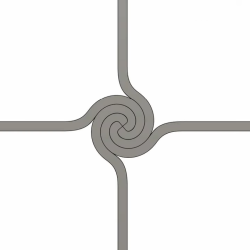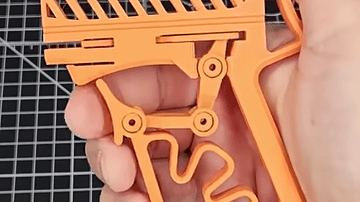Whatever your day job, many of us would love to jump behind the controls of a dump truck for a lark. In the real world, that takes training and expertise and the opportunity is denied to many of us. However, you can live out those dreams on your desk with this 3D-printed build from [ProfessorBoots.]
The build exists as two separate parts—the tractor, and the trailer. The tractor is effectively a fairly straightforward custom RC build, albeit with a few additional features to make it fit for purpose. It’s got six wheels as befitting a proper semi, and it has a nifty retractable magnetic hitch mechanism. This lets it hook up to various trailers and unhitch from them as desired, all from a press on the remote. The hitch also has provision for power and control lines that control whatever trailer happens to be attached.
As for the trailer, it’s a side-dumper that can drop its load to the left or right as desired. The dumping is controlled via a linear actuator using a small DC motor and a threaded rod. A servo controls a sliding locking mechanism which determines whether the truck dumps to the left or right as the linear actuator rises up.
The design video covers the 3D printed design as well as some great action shots of the dump truck doing its thing. We’ve featured some builds from [ProfessorBoots] before, too, like this neat 3D-printed forklift . Video after the break.






















